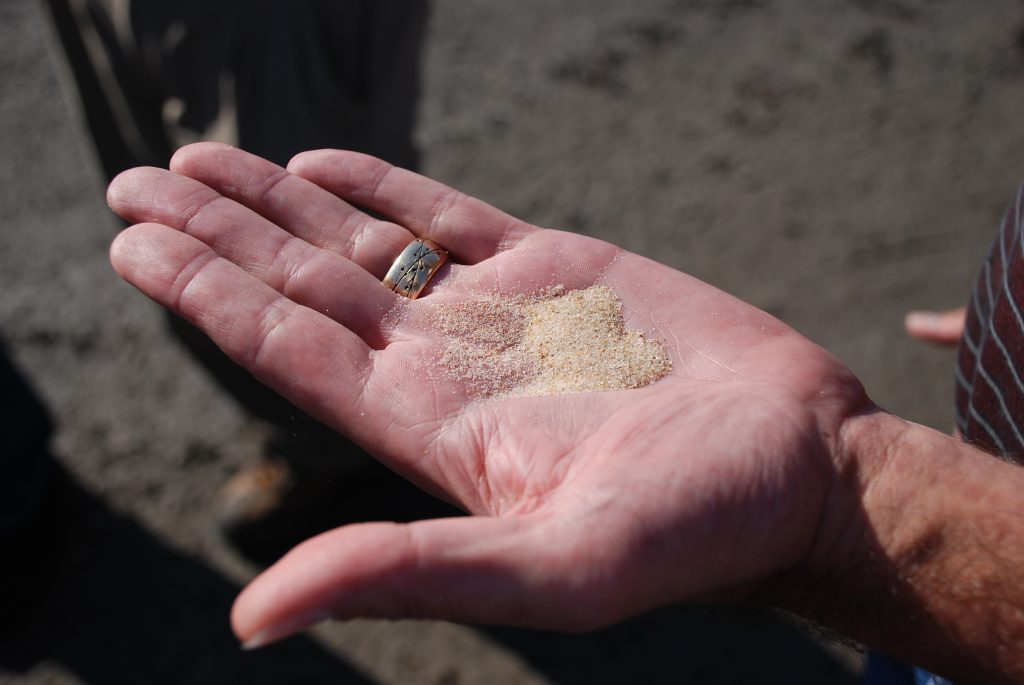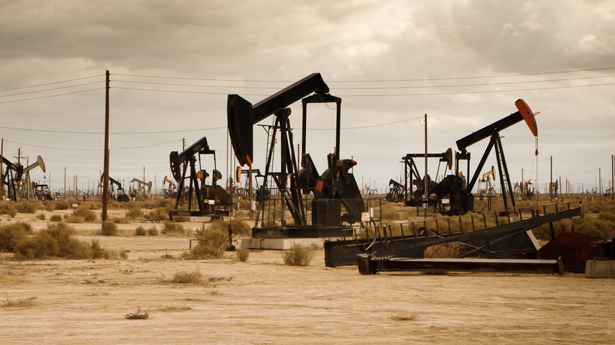For the last six years, Kevin Bowen has made a good living selling sand to operators and oil-field service providers who use it to complete horizontal wells. It was a lucrative market tied to the drilling boom in West Texas.
But today the U.S. frac-sand industry is swimming in an excess of supply that has battered prices and cut the stocks of frac sand miners by more than 70 percent in the last two years. So, Bowen’s Shale Support LLC, based in Mississippi, is doing something he thought would never happen: selling sand outside of the U.S.– and reaping a 20-percent bump in profit.
The first shipment, 25,000 tons worth, pulled into a port in Bahia Blanca, Argentina last month after a 22-day sea odyssey from New Orleans, La., and he’s still amazed that Argentina would look past its own sand.
“I thought, certainly there’s got to be sand closer that’s good enough quality,” he said. “I think the answer is: ‘Right now, no.”’
Fine-grained silica sand is mixed with chemicals and water before being pumped into rock formations to prevent the newly created artificial fractures from closing after hydraulic fracturing is completed. (Credit: Bill Cunningham, USGS. Public domain.)
Source of Glut
The source of the oversupply is easy to trace. In the last couple of years, entrepreneurs opened dozens of sand mines throughout the U.S., particularly in the red-hot Permian basin oil patch of West Texas and New Mexico, rivaling the original capital of U.S. frac-sand mining in northwestern Wisconsin.
Enjoying our insights?
Subscribe to our newsletter to keep up with the latest industry trends and developments.
Stay InformedProduction surged 50 percent. Now, for every grain of sand that explorers need to prop open a tiny crack in their oil-soaked rock, miners have roughly two grains to offer them.
That’s depressed the industry even as shale production continues to shatter records. Some sand companies in Texas and around the U.S. have shut down quarries. Both U.S. Silica Holdings and Covia Holdings have started to tout their market diversity, selling sand to industries such as construction and automotive.
Some Wisconsin mines are struggling to stay open. Hi-Crush Partners, which has mines in Wisconsin and was the first to open one in West Texas, has seen its stock fall by 77 percent since the end of 2016.
“If we didn’t have the West Texas mines, the U.S. would be under-supplied with sand,” said Scott Forbes, who watches the sand market for industry consultant Wood Mackenzie.
The search for new markets like Argentina marks another strange twist for the sand industry. When fracing took off a decade ago in Texas, drillers naturally turned to Wisconsin, its epicenter. Along with water and chemicals, sand is pumped underground to release trapped hydrocarbons.
Oil Plunge
But in 2014, the price of oil plunged. Drillers rushed to the West Texas area to pump shale oil, the cheapest method to extract the fuel. Looking to cut costs further, drillers concluded there was no need to ship sand 1,300 miles by rail from Wisconsin. Plenty of it existed in West Texas, even if its size or shape wasn’t as efficient as Wisconsin’s in getting oil out of shale. The cost saving was dramatic: Shipping from Wisconsin came to about $90 per ton, triple the $25 or so to truck sand in Texas.
But the frenzied sand expansion has brought the inevitable bust. The price of West Texas sand is expected to drop almost 20 percent to about $30 a ton compared with last year, according to Rystad Energy AS. Covia, the second-biggest frac-sand miner, has idled 7 million tons, the most by any one company tracked by Evercore ISI.
U.S. Silica, the current king of frac sand in terms of market size, estimated in February that as much as 20 percent of the 50 million tons of northern sand needs to get shut down. Its stock is down about 70 percent since the end of 2016.
“Some of that capacity is just kind of companies and mines that are sort of hanging on by their fingernails at this point,” said Bryan Shinn, chief executive of U.S. Silica.
Vaca Muerta
Meanwhile, as sand prices and competition grew, Kevin Bowen looked for a new market. He found it in Argentina, where the country is trying to boost production at the Vaca Muerta field in Patagonia, one of the world’s largest shale plays that remains largely untapped.
He expects to get paid about $240 a ton for his sand, far more than the $50 a ton that U.S. oil companies are paying in the Permian basin. It even exceeds the $170 per ton drillers are paying to get sand from mines in Argentina. That’s because U.S. sand is of better quality and, besides, Argentina’s mines can’t satisfy the demand.
Bowen said he has no intention of abandoning the U.S. shale business, which remains the biggest user of any kind of sand. But he needed a way to broaden his base of customers.
“The American market is going to be cyclical up and down,” Bowen said. “Argentina definitely offers the opportunity to flatten some of those up and down cycles.’’
(from World Oil Magazine)
























